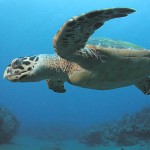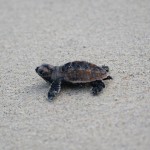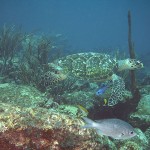It’s good news for the Jumby Bay Hawksbill Project, which is celebrating its 25th year, with the news that there has been a significant increase in nesting sea turtle populations over the last decade.
Located in the Leeward Islands of the eastern Caribbean, Long Island, better known as Jumby Bay, is a 300-acre private island just off Antigua’s northeastern coast and the project’s primary study site. Begun by a small group of interested people in 1986, including scientific experts at a time when little was known about the hawksbill sea turtle, the project aims to better understand their life history and population dynamics, and use the findings as a foundation for wise management and scientifically-grounded policy making.
The island’s isolation has provided the perfect place to study the turtles along the 450 metres of the quiet Pasture Beach on the north side, backed onto by private residences, since the project began.
The scientifically-based research is achieved through intensive monitoring of the nesting beaches, tagging or ensuring that all turtles nesting on Pasture Beach have been identified.
During the nesting season, from June 1 to mid-November each year, these creatures are watched around the clock by project staff – around 30 people – who patrol the beaches hourly on foot, shortly after sunset until shortly before sunrise. Though exhausting, the work is rewarding. As the longest, continuous running hawksbill study, the project has collected much data and been able to carry out extensive research to become one of the world’s most informed sources on the sea turtles.
Part of the project also involves conducting public awareness presentations for school groups, developing partnerships with local and regional organizations, such as Antigua’s Environmental Awareness Group, and hosting international researchers through training exchange programmes. All of these activities go towards the greater goal of promoting the successful conservation of sea turtles in Antigua and across the region, through increased public awareness of marine turtles.
The island is also home to several private residences and the beautiful Jumby Bay Resort. In line with the project’s philosophy of sharing its knowledge, locals and visitors from the mainland and island can join the team at any time during the turtle watches at night.
The hawksbill sea turtles spend part of their lives in the open ocean, but are usually found near lagoons and coral reefs, because they feed primarily off sea sponges found there. Their shells, which are typically amber, black and mottled brown colours are the main source of tortoise shell used for decorative purposes. The World Conservation Union classifies this particular marine turtle as critically endangered.
For more information see: Jumby Bay Hawksbill Project
Filed by APrice





